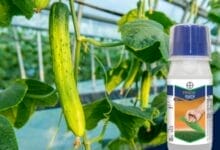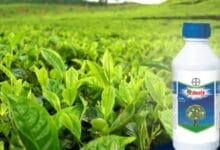Simodis Insecticide: A Broad-Spectrum Insecticide Powered by PLINAZOLIN® Technology.

Simodis Insecticide: A Broad-Spectrum Insecticide.
In the ever-evolving landscape of agriculture, pest management remains a cornerstone of crop productivity.
Among the latest innovations, Simodis, a flagship insecticide from Syngenta, stands out for its broad-spectrum efficacy, resistance management, and crop safety. Powered by PLINAZOLIN technology, Simodis is redefining how farmers protect their crops from destructive pests, including Fall Armyworm (FAW), thrips, whiteflies, and bollworms.
Table of Contents
Simodis Insecticide: Chemical Composition and Technical Overview
Active Ingredient
- Chemical Name: Isocycloseram (PLINAZOLIN®)
- IRAC Group: Group 30 – Novel mode of action
- Formulation: Soluble Concentrate (SC)
Simodis Insecticide: Technical Name:
Symodis Syngenta Technical is
- 9.2% w/w DC Isocycloseram
- 10% w/v DC Isocycloseram
Simodis Insecticide: Mode of Action
It targets the ryanodine receptors in insect nervous systems, causing paralysis and ultimately leading to death. This unique mechanism makes it highly effective against pests resistant to older chemical classes
Recommended Crops
It is suitable for a wide range of crops across different growth stages:
| Crop | Application Stage |
|---|---|
| Cotton | Vegetative to boll development |
| Soybean | Flowering to pod formation |
| Tea | Flush stage |
| Rice | Tillering to grain filling |
| Chilli | Flowering and fruit setting |
| Brinjal | Flowering and fruit setting |
| Tomato | Fruit initiation to harvest |
Simodis Insecticide Uses: Target Insects and Pest Control.
Symodis Syngenta Uses: It provides control over both chewing and sucking pests:
| Insect | Type | Crop Damage |
|---|---|---|
| Thrips | Sucking | Leaf curl, reduced photosynthesis |
| Whiteflies | Sucking | Sooty mold, virus transmission |
| Bollworms (Helicoverpa) | Chewing | Bore holes, fruit drop |
| Leafhoppers | Sucking | Hopper burn, stunted growth |
| Aphids | Sucking | Sap sucking, virus transmission |
| Shoot & Fruit Borer | Chewing | Bore holes, fruit drop |
| Caterpillars (Spodoptera) | Chewing | Leaf damage, defoliation |
Special Focus: Fall Armyworm (FAW)
Why FAW is a Threat
The Fall Armyworm (Spodoptera frugiperda) is a highly invasive pest that affects maize, sorghum, and other crops. It causes rapid defoliation, yield loss, and is resistant to many conventional insecticides.
Its effects on FAW
Simodis has shown excellent control over FAW due to its novel chemical class and long residual activity, making it a preferred choice in FAW-infested regions.
Simodis Insecticide: Recommended Dosage and Application Guidelines
Dosage
- 100–120 ml per acre, depending on crop and infestation level
Simodis Dosage Per Litre.
- Simodis insecticide dosage per litre: 1.2 ml.
Spray Volume
- 150–200 litres of water per acre for thorough coverage
Application Frequency
- 1–2 applications per season
- Interval: 15–21 days
Best Time to Spray
- Early morning or late afternoon
- Avoid spraying before rainfall
Compatibility and Tank Mixing
It is compatible with most insecticides and fungicides. However, a jar test is recommended before large-scale mixing.
Resistance Management Strategy
To prevent resistance buildup, rotate Simodis with other insecticides:
| Product Name | Active Ingredient | IRAC Group |
|---|---|---|
| Coragen | Chlorantraniliprole | Group 28 |
| Benevia | Cyantraniliprole | Group 28 |
| Tracer | Spinosad | Group 5 |
| Movento | Spirotetramat | Group 23 |
Also Read: Gracia Insecticide
Crop Safety and Environmental Impact
It is gentle on crops, showing minimal phytotoxicity. Its low environmental load and extended residual activity contribute to sustainable farming practices.
Pollinator Safety
Simodis has a low impact on pollinators when applied correctly:
- Spray during non-active hours (early morning or late evening).
- Avoid spraying during peak bee activity.
Restrictions and Safety
- Class of Danger: Danger
- Hazard Statement: Moderately toxic
- Antidote: No specific antidote; symptomatic therapy recommended 2
Packaging Sizes
Available in:
- 80 ml
- 120 ml
- 240 ml bottles
Frequently Asked Questions (FAQs)
- Can Simodis be used in organic farming?
- No. It is a synthetic molecule not approved for organic systems.
- How long does Simodis remain effective?
- Up to 2–3 weeks, depending on weather and pest pressure.
- Is it rainfast?
- Yes. It has excellent sunlight stability and rain resistance 3.
- Can it be used in IPM programs?
- Absolutely. It’s ideal for Integrated Pest Management due to its novel mode of action.
Where to Buy Simodis
Simodis is available through:
- Syngenta India distributors
- Online platforms pradhanagro.co.in
Final Thoughts: Why Choose Simodis?
Simodis is more than just an insecticide—it’s a strategic tool for modern agriculture. With its PLINAZOLIN® technology, broad-spectrum control, and resistance management, it empowers farmers to protect their crops efficiently and sustainably.
Key Benefits Recap:
- Long-lasting residual control
- Effective against resistant pests
- Safe for crops and pollinators
- Flexible application timing
- Supports sustainable farming
Also, read on Syngenta’s Official site: Click Here







